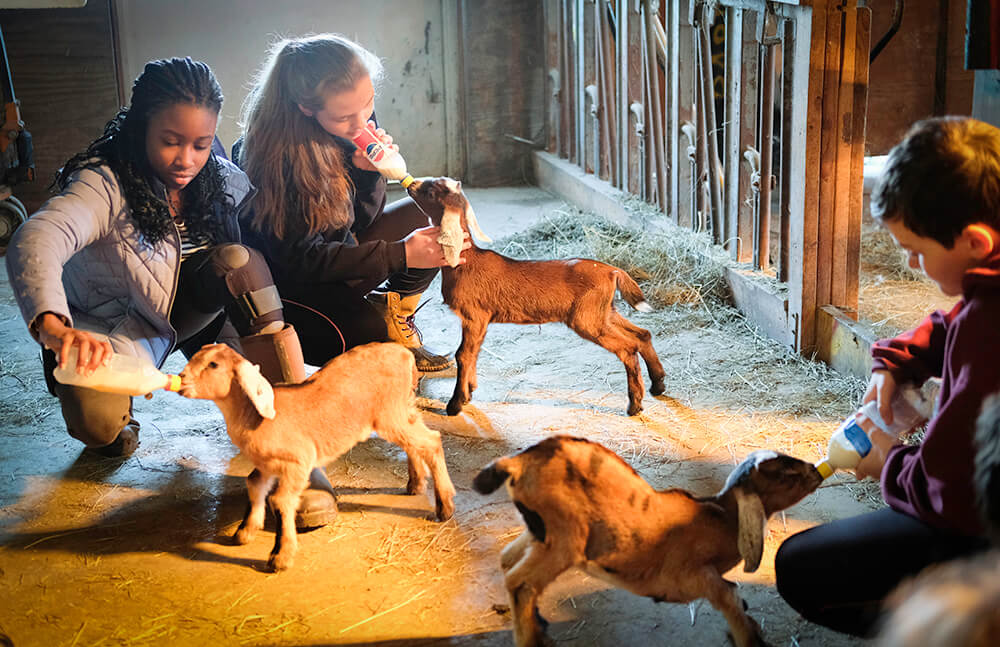
Middle School
The Montessori Middle School Program (Grades 7-9) is designed to produce adults who are equipped with the confidence in themselves and actual skills to live in the real world. Academic connections are made across the disciplines using texts, various forms of literature and primary source documents. Field trips and community service opportunities enrich student learning and ingrain a sense of participation and responsibility for our world.
Middle School at HMMS is a challenging academic program that involves in-depth cultural studies, hands-on science, creating and managing a business, and Regents math. The students also make connections to the land by caring for animals and tending crops. Building community in this way helps adolescents find their place and purpose in their microcosm and beyond.
Adolescence is the time when the child enters into the state of adulthood. Montessori identifies this as the third plane of development, in which the adolescent finds his or her social independence. The Erdkinder Program (“children of the earth”) provides the adolescent with the opportunity to work the land, care for and feed the animals, and recognize and use natural resources. The physical challenges of running and working a farm help build and strengthen growing muscles and improve cardiovascular health, which is essential to the young adolescent. Students should be experiencing fresh air and rigorous physical work, and learning about the benefits of local food sourcing. Through the Erdkinder, the students recognize where their food comes from and provides sustainable living for their direct and surrounding community.
In farming communities long ago, the individual child had a good deal more direct contact with animals and other things in nature, but those opportunities have been drastically reduced since that time. Children have been much removed from their natural surroundings, and so it has become necessary to create an environment that allows children to act on objects around them in other ways. In this environment, each child’s individual personality is allowed to unfold.
“Education should therefore include the two forms of work, manual and intellectual, for the same person, and thus make it understood by practical experience that these two kinds complete each other and are equally essential to a civilized existence.”
(From Childhood to Adolescence, p. 65)
